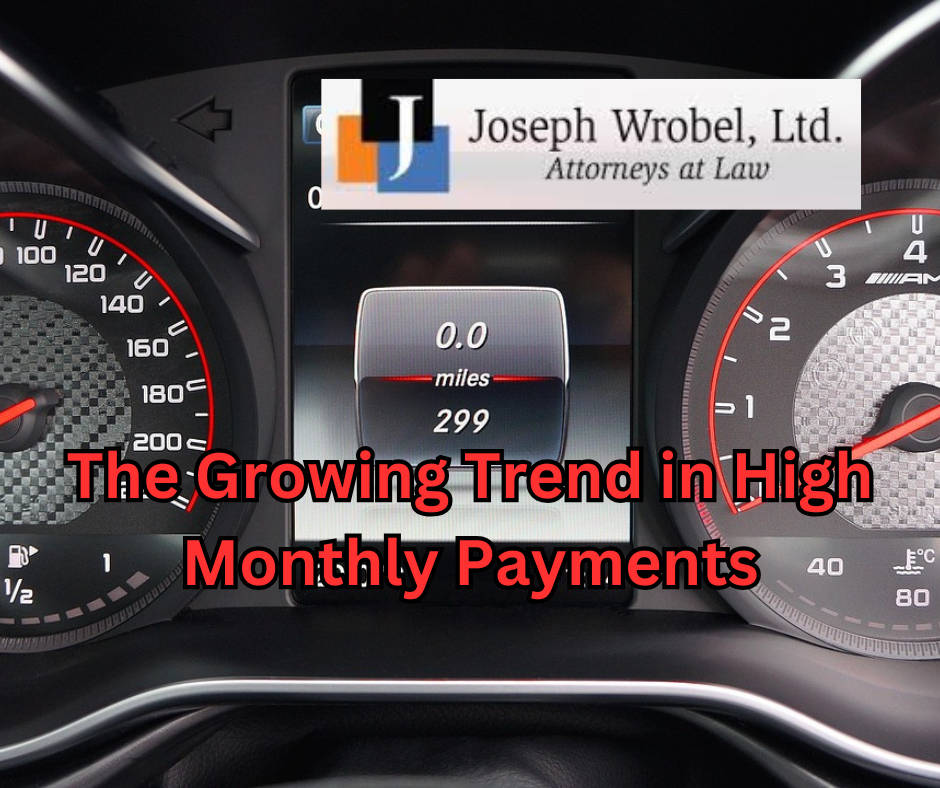The Growing Trend in High Monthly Payments
Recent national data show that nearly one in five new vehicle buyers are now signing loans with monthly payments of $1,000 or more. According to Edmunds, this marks a record high and highlights how rising car prices, increased interest rates, and longer loan terms are changing the way consumers finance vehicles. For many households, the decision to buy a new car now comes with far greater long-term financial commitment than in previous years.
The average amount financed has risen sharply, and buyers are reducing down payments to make vehicles appear more affordable on a monthly basis. While this approach can keep payments within reach at first, it leaves many drivers exposed to negative equity—owing more than the vehicle is worth and limits flexibility if their financial situation changes. For working families who rely on steady income to manage multiple debts, these high car payments can quickly become unsustainable.
Why Payments Have Reached Record Levels
Several factors have pushed car payments to historic highs. Vehicle prices have increased dramatically over the last few years, particularly for larger trucks and SUVs that dominate the U.S. market. At the same time, the end of widespread low-interest promotions means fewer borrowers can access affordable financing. The combination of higher sticker prices and more expensive credit creates a perfect storm for consumers already under pressure from inflation and higher living costs.
To manage these costs, many buyers are extending loan terms to six, seven, or even eight years. While this lowers the monthly payment, it significantly increases the total cost of the loan over time. Longer repayment schedules also delay the point at which borrowers begin to build positive equity in their vehicle. If they need to sell or trade before the loan is paid down, they may find themselves in a negative financial position.
The Impact on Financial Stability
A $1,000 monthly payment can consume a substantial portion of a typical household budget. When paired with higher insurance, fuel, and maintenance costs, total vehicle ownership can become an overwhelming burden. Many consumers underestimate how quickly these combined expenses add up, leaving little room for savings or unexpected emergencies. Once a single financial setback occurs, late payments and delinquency can follow.
As financial stress builds, borrowers often attempt to stay current by juggling other debts, taking on additional credit, or relying on short-term loans. These temporary solutions can worsen the situation over time. Missed car payments not only risk repossession but also cause long-lasting damage to credit scores, which makes borrowing more expensive in the future. The pattern becomes a cycle that is difficult to escape without professional intervention.
Understanding the Broader Economic Context
The rise in $1,000 car payments is also an indicator of the broader economy. For years, vehicle affordability has depended on stable interest rates and strong consumer credit conditions. As those conditions change, the effects are felt most acutely by middle- and lower-income borrowers. Even households with decent credit are finding it harder to qualify for manageable loans, while lenders tighten standards in response to growing default risks.
These dynamics reflect deeper financial inequality. High-income earners can often absorb rate increases or pay cash for new vehicles, while others rely on long-term financing that locks them into years of debt. The gap between those who can afford to finance comfortably and those who cannot continues to widen, and the car market has become a clear example of how rising credit costs influence everyday life.
How Borrowers Can Protect Themselves
Before taking on a new vehicle loan, consumers should examine their overall financial picture rather than focusing solely on the monthly payment. A realistic budget should include not only the loan but also insurance, maintenance, registration, and fuel. Borrowers should also calculate the total cost of the loan, not just the interest rate, to understand the full financial impact. A smaller, reliable vehicle or a certified pre-owned option may be a more sustainable choice than a new model requiring years of high payments.
For individuals already struggling with auto loans or related debt, consulting a bankruptcy attorney early can provide important protections. Chapter 13 bankruptcy may allow borrowers to catch up on missed car payments through a court-approved plan while keeping their vehicle. Chapter 7 bankruptcy, in some situations, can discharge unsecured debts, freeing up income to maintain essential expenses like car ownership. Acting before repossession occurs is always the best strategy.
The Perspective of a Bankruptcy Attorney
Chicago bankruptcy attorney Joseph Wrobel has seen firsthand how rising vehicle costs and high-interest loans create problems for everyday consumers. He advises clients that it is far better to seek help before falling behind rather than waiting until credit damage has occurred. “When people come in early,” he explains, “we have more options available to protect their car, manage their debt, and put them on a better financial path.”
Wrobel emphasizes that bankruptcy is a financial tool designed to provide relief and structure, not a sign of failure. For individuals trapped by high car payments and other unsecured debt, it can be a strategic way to regain control. The key is early intervention and a clear understanding of how the law can help stabilize a difficult situation before it becomes worse.
Moving Forward with Financial Awareness
The growing number of Americans paying $1,000 or more for their car each month is more than a headline—it is a reflection of how credit conditions and inflation are shaping consumer behavior. For many families, the cost of maintaining a new vehicle has become a significant financial risk. As the trend continues, it will likely have ripple effects across the broader economy, especially if delinquency rates continue to rise.
Consumers should remember that financial stress from car debt is not permanent. By seeking professional advice and exploring all available legal options, it is possible to protect essential assets and regain stability. As Joseph Wrobel reminds his clients, bankruptcy is not the end of financial life; it is often the first step toward rebuilding it with a stronger foundation.
About Joseph Wrobel, Ltd.
Check Out the Chicago Bankruptcy Podcast!
Joseph Wrobel, Ltd. is a Chicago bankruptcy law firm helping individuals and families find relief from debt through Chapter 7 and Chapter 13 filings. With decades of experience, the firm provides practical, compassionate legal guidance tailored to each client’s financial situation. Learn more at www.ChicagoBankruptcy.com.

 Subscribe to CB on YouTube!
Subscribe to CB on YouTube!